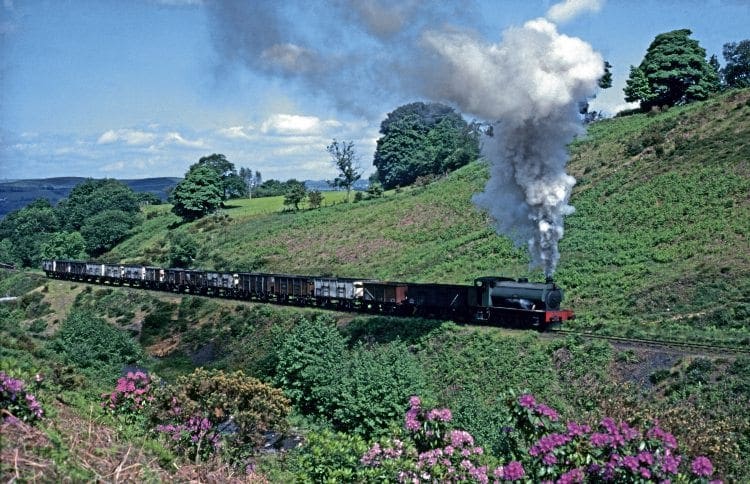The National Coal Board railway in the Dulais Valley was unique. Geoff Silcock recounts some of the incidents that punctuated the line’s last few years, including an encounter with a then unknown journalist…
Into the 1970s two NCB Austerity 0-6-0STs; Hunslet-built Norma and a Bagnall dubbed locally ‘The Flying Dutchman’ regularly lugged 200-300 tons of empties up and the fulls of anthracite coal, sometimes a lot faster than expected, down the Dulais valley on the Graig Merthyr system based at Pontardulais near Swansea, on the prevailing 2½ miles of 1-in-40 gradients and 45-degree curves.

There was a time when the M4 only stretched its concrete swathe as far as the outskirts of Swansea, and the main road onward to the west was the A48, with the first town of note to the north-west being Pontardulais, with its approach marked by a descent into the town of 1-in-12. Few of the travellers then would have noticed the battered NCB level crossing gates at the foot of the hill, except when they were opened for rail traffic. Indeed, some still didn’t, which explained why they had become so battered into the 1970s.
Enjoy more Heritage Railway reading in the four-weekly magazine.
Click here to subscribe & save.
An American on holiday stopped at the gates, saw the Austerities at work, and stayed for three days; a Dutch couple likewise in their caravanette for a week. their particular stay must have made a lasting impression on the NCB loco crews at the time, as the Bagnall Austerity No. 2758 was then duly christened ‘The Flying Dutchman’, with the name painted on both sides of the running plate in their honour.
Read more in the latest issue of HR
Advert
 Enjoy more Heritage Railway reading in the four-weekly magazine. Click here to subscribe.
Enjoy more Heritage Railway reading in the four-weekly magazine. Click here to subscribe.




